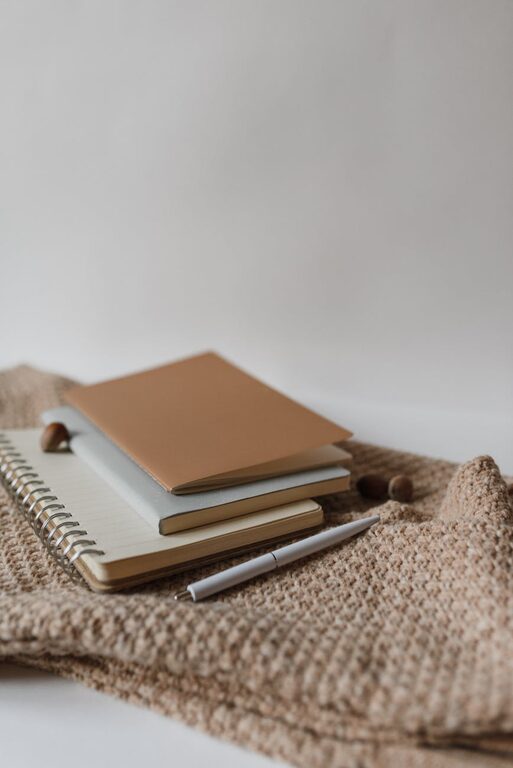Choosing the right notebook can make a big difference in how often you use it and how effective it is for your needs. With so many options available, from various sizes to paper types and layouts, it’s easy to get overwhelmed. Whether you want a notebook for journaling, work notes, or creative ideas, this guide will help you find one you’ll actually enjoy using.
Why Choosing the Right Notebook Matters
A notebook isn’t just a place to jot down thoughts; it can be a tool for productivity, creativity, or relaxation. When you pick a notebook that fits your lifestyle and preferences, you’re more likely to stick with it, and that consistency can boost your habits and goals.
Consider Your Purpose
Before buying a notebook, think about how you plan to use it. Different uses require different features.
For Note Taking
– Size: A medium-sized notebook (around A5) is portable but provides enough space to write.
– Paper: Smooth, bleed-resistant paper is ideal for frequent writing.
– Binding: Spiral or lay-flat bindings make it easier to write on both sides.
For Creative Work
– Paper Type: Blank or dotted pages give the freedom to sketch or bullet journal.
– Cover: A durable cover protects your artwork.
– Size: Larger notebooks (A4 or bigger) offer more space.
For Planning and Organizing
– Layout: Pre-printed planners or grids can help keep tasks structured.
– Tabs or Dividers: Useful for separating sections.
– Extras: Pockets or elastic bands keep inserts and pens handy.
Choose the Right Size and Portability
Notebooks come in many sizes, from pocket-sized to large sketchbooks.
– Pocket (A6 or smaller): Very portable but limited writing space. Great for quick notes or grocery lists.
– Medium (A5): Balances portability and space, suitable for daily notes and journals.
– Large (A4 or larger): Ideal for detailed notes, sketches, or scrapbooking but less travel-friendly.
Consider where you’ll use the notebook most. If you commute or travel often, a smaller notebook might be more practical.
Decide on Paper Quality and Type
Paper quality influences the writing experience. Cheap paper can bleed or tear, detracting from your enjoyment.
– Weight: Paper weight is measured in gsm (grams per square meter). Heavier paper (80-100 gsm or more) prevents ink bleeding.
– Finish: Smooth paper works well with pens, while textured paper may suit pencils.
– Ruled, Blank, Dotted, or Grid: Ruled lines help with neat writing, dotted and grid pages are versatile for notes and sketches, and blank pages offer freeform creativity.
If you prefer using fountain pens, markers, or watercolors, test or check reviews for feathering and bleeding.
Binding Types: Which One Fits You?
The notebook’s binding affects its usability and durability.
– Spiral Binding: Opens flat and back pages can fold over easily. Great for note-taking and casual use.
– Perfect Binding: Looks like a paperback book, attractive but may not lie flat.
– Sewn Binding: Durable and often used in high-quality journals; some lie flat.
– Disc Binding: Modular, allows easy page removal and reorganization.
Choose a style that feels comfortable to write in and fits your routine.
Cover Materials and Design
The notebook cover protects your pages and expresses your personality.
– Softcover: Lightweight and flexible; may wear out faster.
– Hardcover: Offers sturdiness and better protection.
– Material: Leather, cardboard, plastic, or fabric covers vary in look and feel.
– Design: Pick something that motivates you or blends with your style—whether minimalist, colorful, or patterned.
Check for Useful Features
Extra features can enhance your notebook experience.
– Page Numbers: Helpful for indexing and quick reference.
– Index Pages: Some notebooks have designated spaces for organizing content.
– Pockets: Keep loose papers and notes safe.
– Pen Loop: Ensures you always have a writing tool handy.
– Perforated Pages: Easy to tear out notes or sketches cleanly.
– Elastic Closure: Keeps your notebook closed and pages protected.
Test Before You Commit
If possible, try writing in a sample notebook or read detailed reviews. Holding the notebook and testing the paper with your preferred pen can save you from regretful purchases.
Make It a Habit
Once you’ve chosen your notebook, the key to using it regularly is making it part of your routine.
– Keep it accessible.
– Use it daily, even for a few minutes.
– Personalize your notebook with stickers, tabs, or color-coding to make it inviting.
Final Thoughts
Choosing a notebook you’ll actually use comes down to matching it to your needs, style, and habits. By considering size, paper, binding, and features, you can select a notebook that feels just right. When your notebook suits your lifestyle, it becomes more than paper and ink—it becomes a trusted companion for your ideas and plans.
Happy writing!

